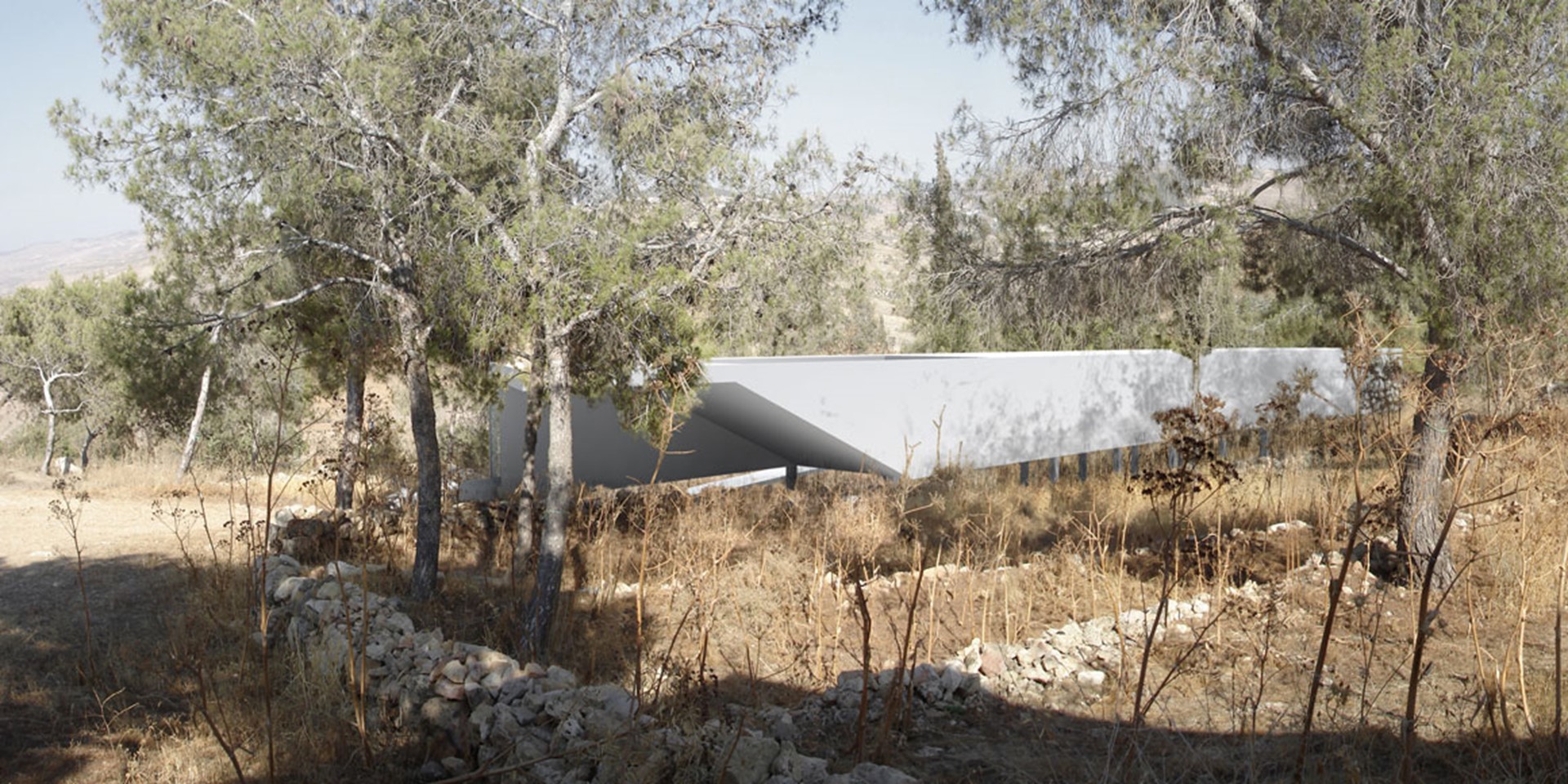The Royal Botanic Garden site is in Tel Al Rumman, Jordan, on approximately 800 hectares of steep slope, overlooking the King Talal Dam. It is the natural habitat to over 470 different plant species. The slopes (over 300m) include remnants of oak forest and stands of pine, allowing a broad selection of microclimates and opportunities to re-create habitats from other parts of Jordan. It also harbours archaeological remains from the Palaeolithic period to the present, a record of ten thousand years of land-use. The “vertebrae” of the site plan is the natural habitat areas, each with its own interpretive and research spaces. These anchor the other programme elements amidst a web of trails. The site design disseminates the various structures throughout the landscape, weaving interpretive experiences and research through the ecological environments along the circulation route. The buildings become markers within the locale, framing the landscape and serving as passages through which to reflect and synthesise. The design strategy is to “extrovert” interpretation, turning the visitor’s attention outward toward the site itself, avoiding the typical interpretative dislocation of context. The buildings become part of the landscape, not separate from it, as each structure is designed to suit and draw attention to the natural environment in which it is situated. Decentralising the visitors' experience, and disseminating the structures throughout the site, reduces the visual impact of the buildings on the landscape, and intensifies the experience of traversing and interpreting the landscape.
Project in collaboration with Kristopher Musumano











